The Art of Fashion: Nordstrom by Cristina Martinez
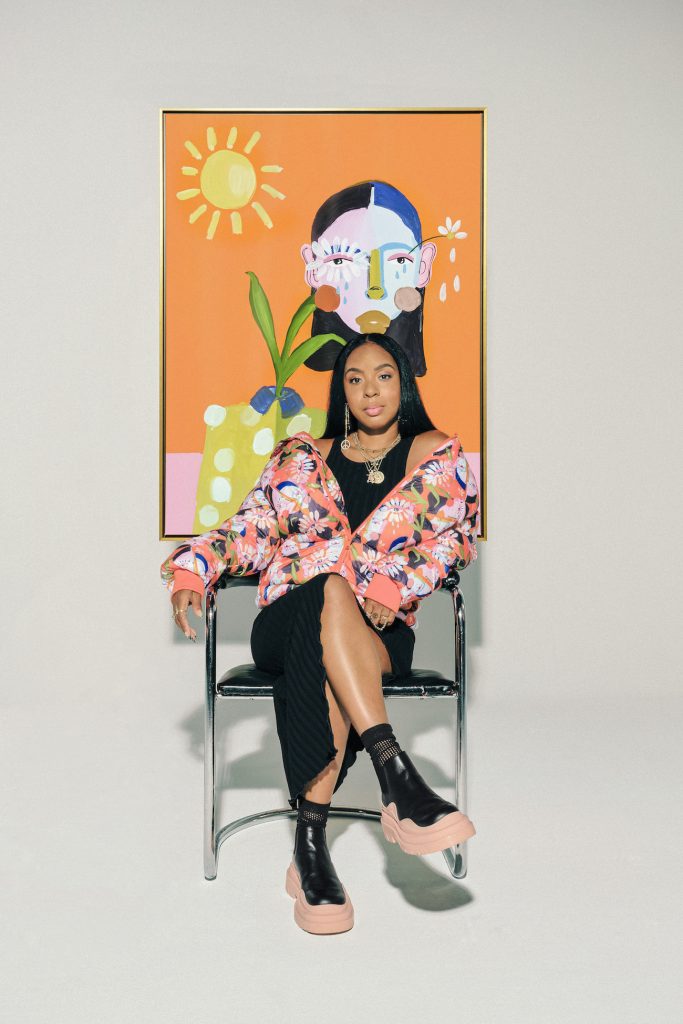
- A shopping recommendation by Clea Bierman
“My real calling got louder than my distractions. ”
The first time I saw a piece of art by Cristina Martinez I was at a friend’s house. She had a print, framed but not yet hung, bright fuchsia dresses on brown skinned bodies set against a white backdrop. It was striking, powerful. The boldness of the colors – the bright pink clothing and black varied hairstyles – illuminated an influential culture in a way that said I’m here. And, a layer above its depth of meaning, it was simply aesthetically pleasing. Like a design sketch but with more feeling, vivacious and enchanting enough to liven any room. An art enthusiast, and one that allows myself to be drawn to pieces merely because I am drawn, I inquired excitedly. I began following Cristina on Instagram, day by day falling in love with her work which seemed to encompass what it means to be female, and, more specifically, what it means to be a Black and Hispanic woman in today’s world (which she is).
Cristina frequently paints women as flowers (or flowers as women, depending on your perspective). They are often bent at the neck, teary, or somber. And yet they’re tenacious and strong, a fight in their eyes, on their pursed lips, in the vivid hues they don and the patterns of their clothes. It is the state of these seemingly paradoxical emotions coexisting beautifully that portrays the feminine existence. Bending instead of breaking, living through our woes and heartaches, finding our strength but sometimes refusing to smile; this is universal.
I knew Cristina had me the first time she posted images of a painting called Water Me. It looks down on a woman in a bathtub. Her brown skin peaks through blue water dusted by white daisies. By her side is an open journal, a plate of grapes and cheese, and a pink bath rug. Maybe it was the nod to writing that spoke to me, I can’t really say, nor do I want to. Quite purely, I was grabbed. Pulled into the feeling of melting in warm water, peaceful and preparing for a great emergence.
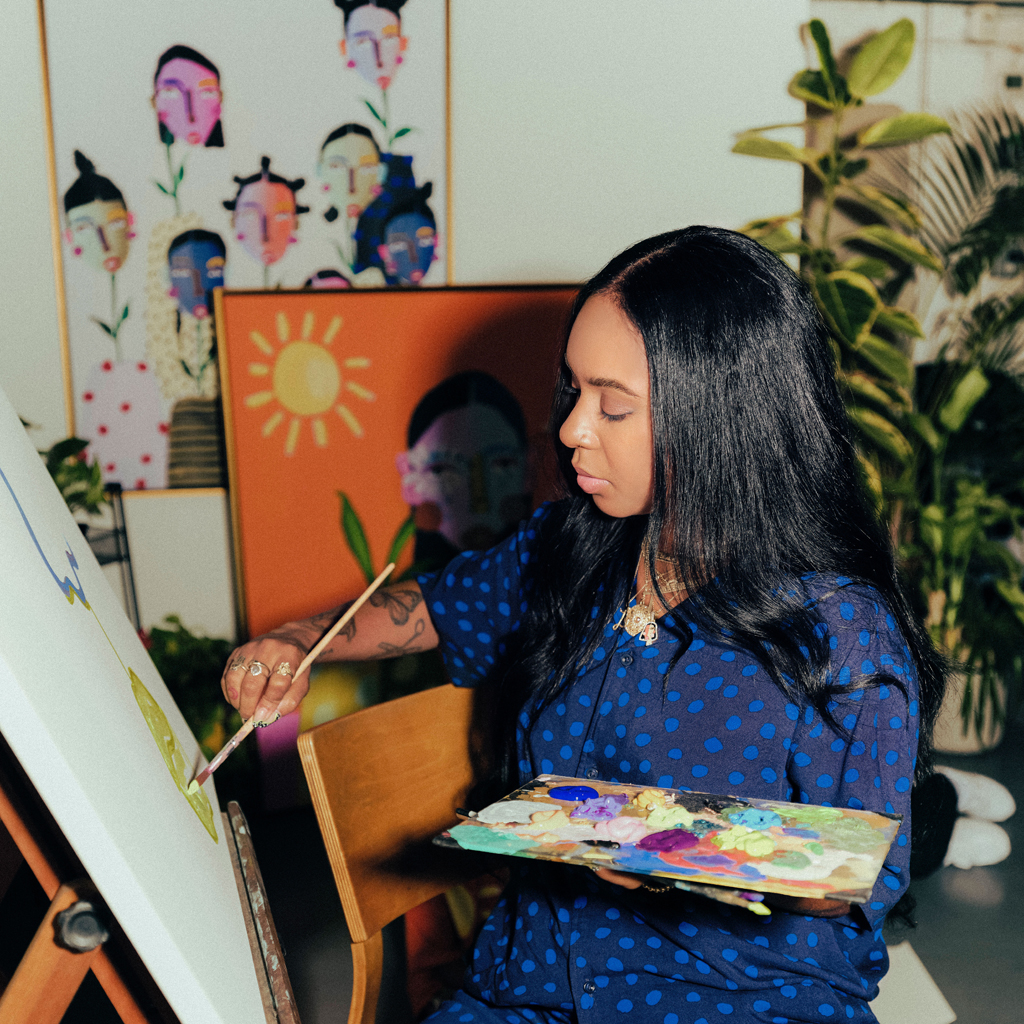
In the middle of the pandemic, at a time in California where venturing out was still truly taboo, I masked up and headed downtown to see Two Sides to Every Story, a gallery show by Cristina and her artist boyfriend, Al-Baseer Holly (who is also particularly dope). I had a couple mezcal rocks and a Kanha Gummy before arriving, so I was flying high as I entered the chic warehouse space. Mounted on a wall on what seemed to be the main room was Water Me. I was stunned, moved. I felt like I’d just been pounded in the chest and the vibrations of the force were reverberating outward. There was something different about seeing her work in person, large scale. As though the power I’d already identified had been amplified a hundred-fold. If I’m remembering right, someone had to actually come pull me away from this particular piece. Seeing Cristina, herself, in person had a similar effect, she was wearing all white and literally glowing. I knew I was staring at her aura – the way I tend to do when I’m high as fuck (it looks a little like judgement when really it’s admiration) – as she spoke to our friend group. I think I managed to get out some sort of compliment regarding the IRL impact I was enduring. I was more than officially a fan.
In true six-degrees-of-separation fashion, the same friend – Anna Miya – who introduced me to Cristina’s work became her manager. And despite national closures and human hibernation, I watched them flourish together. Martinez designed label images for Vaseline’s product line geared towards women of color and even painted a full, 52’mural in 3 World Trade entitled The Roots. In the interviews that followed – including for Good Morning America and the New York Times – she talked about the importance of representation and telling untold stories in her work. I fear that “representation” became – in 2020 – one of those words that is woven into everyday colloquialisms but not fully understood (particularly by well represented cultures), so I think it’s important that I detour for a moment here and even put my white privilege on blast. I grew up in a suburban neighborhood and went to a preppy high school with gorgeous architecture quite literally one block from the beach. Skinny, blonde, and economically privileged, when I watched movies like Clueless there was nothing – genuinely nothing – out of the ordinary or that departed from my everyday life. Magazine racks held cover girls who looked like me (prettier, sure, but aligned closely enough to create aspiration). The world around me reflected back images of me. Whether I knew it or not, I felt like I could go anywhere, because I was everywhere. So rather than looking to assimilate, change, check a box, or hide, I could bloom. For the represented to best understand the need for representation, I think it’s most clear in contrast, when we spin this tale. So, imagine the drastic opposite. Pretend what was reflected back at me was all the things that I was not – what impact would that have on my sense of self? In effect, and in my opinion, representation has deeper connotations for how people can thrive and prosper. It’s not just the mirror, it’s space in the room. When I had a chance to speak to Cristina about the impact of her work, she explained this very concept (likely better than I), saying “When you see people [who look like you] doing things that are bigger than them [as a child] you can align your life in that way, it will take you down a completely different path. You just have to see that it’s possible first.”
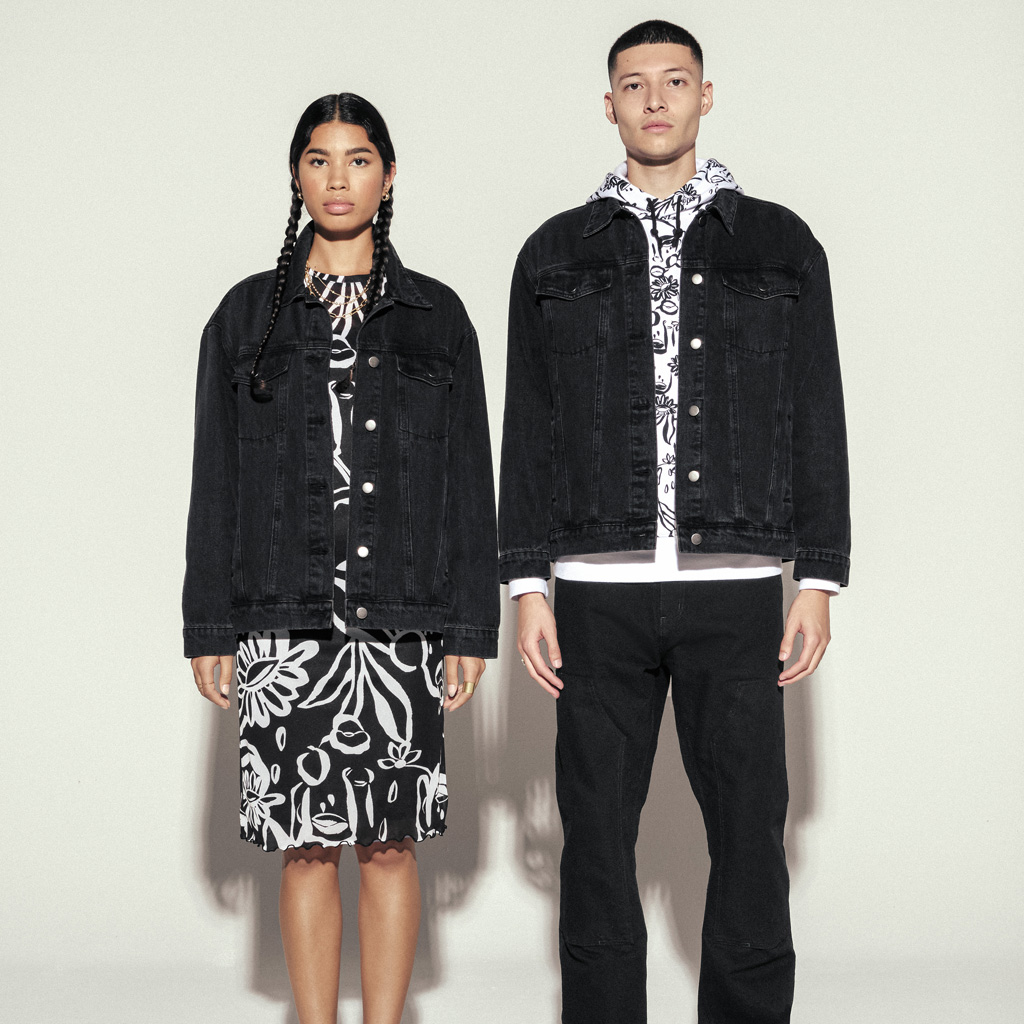
Recently, through a long-term fashion collaboration with Nordstrom that kicked off in celebration of Hispanic Heritage Month, Cristina is bringing representation to a wider-than-ever audience. At one point, Cristina was in fashion school and thought she would become a designer – not to mention, her art is constantly sprinkled with clothing we all fiend to wear – so the collaboration was a comfortable union for the painter. To create the items (which range from baby onesies, to puffer jackets, to throw blankets, and everything in between), Cristina made three original works, from which specific brush strokes, structures, and even backdrops were pulled to produce the patterned prints, now available for purchase. The outline of faces stamped on bodysuits and hoodies are truly emblematic of who Cristina is as an artist. And yet, in the turquoise tears and indigo hairlines, I could almost feel that these were more than emblems, that Cristina left a piece of herself in every item. She affirmed my belief as she described the process of No Rain, No Flowers, one of the paintings used to make the fabrics for Nordstrom:
What I loved about that piece so much was that I was painting from a place of “I just need to not think about anything, I need to just paint.” It was a complete zone-out piece. When I came back to the studio the next day, every brush that I used was not in water. They were all laid out crusty – and these are $40 brushes that I would not want to treat like that, she said laughing. All my tubes of paint were left open. It was one of those feelings like ‘I was meant to create this’ and I think that’s why I connected to it so much when I was done. I had to get away from myself and make this piece.
At the launch party for the first collection (and yes there will be more), I settled into my seat next to a gorgeous, olive-skinned woman who I just knew was a model – either for the line or on Instagram. Amidst cocktails provided by DeLeón and my favorite steak of 2021 (shoutout Bar Verde in Nordstrom, Century City), I learned that this charming vixen was actually Cristina’s mother. I tried not to fan-girl and she tried not to cry as we chatted about how Cristina spent her youth in Seattle painting at her mother’s dining table; the humble beginnings of what we celebrated that evening: an accomplished artist sharing her gift. The night was both an amalgamation of a year of hard work and a mere beginning for all that Martinez will do in her profession. Guests – clad in an array of pieces from the line – danced and sang and celebrated. For a moment, pulling myself apart from the wriggling crowd and taking time to observe, it was as though one of Cristina’s murals had come to life, and I had the great privilege of immersing myself in it.
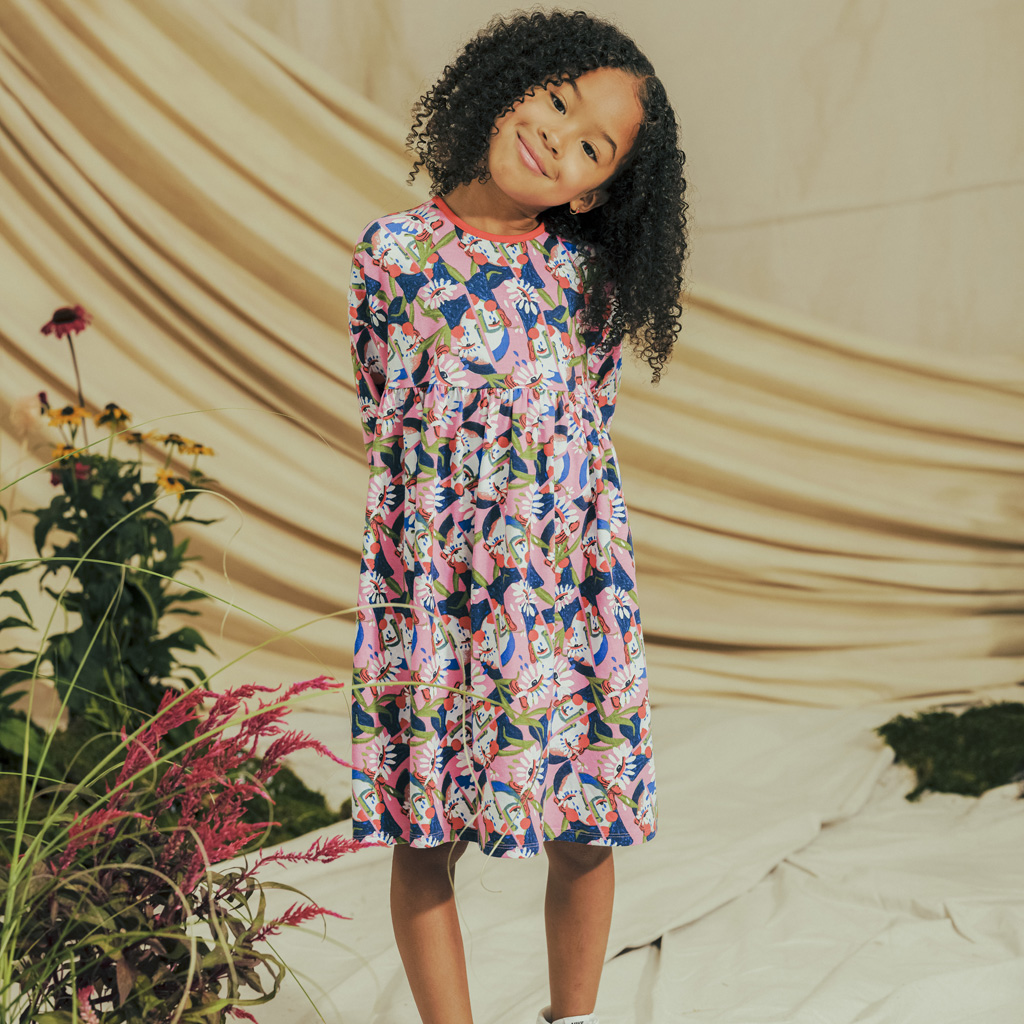
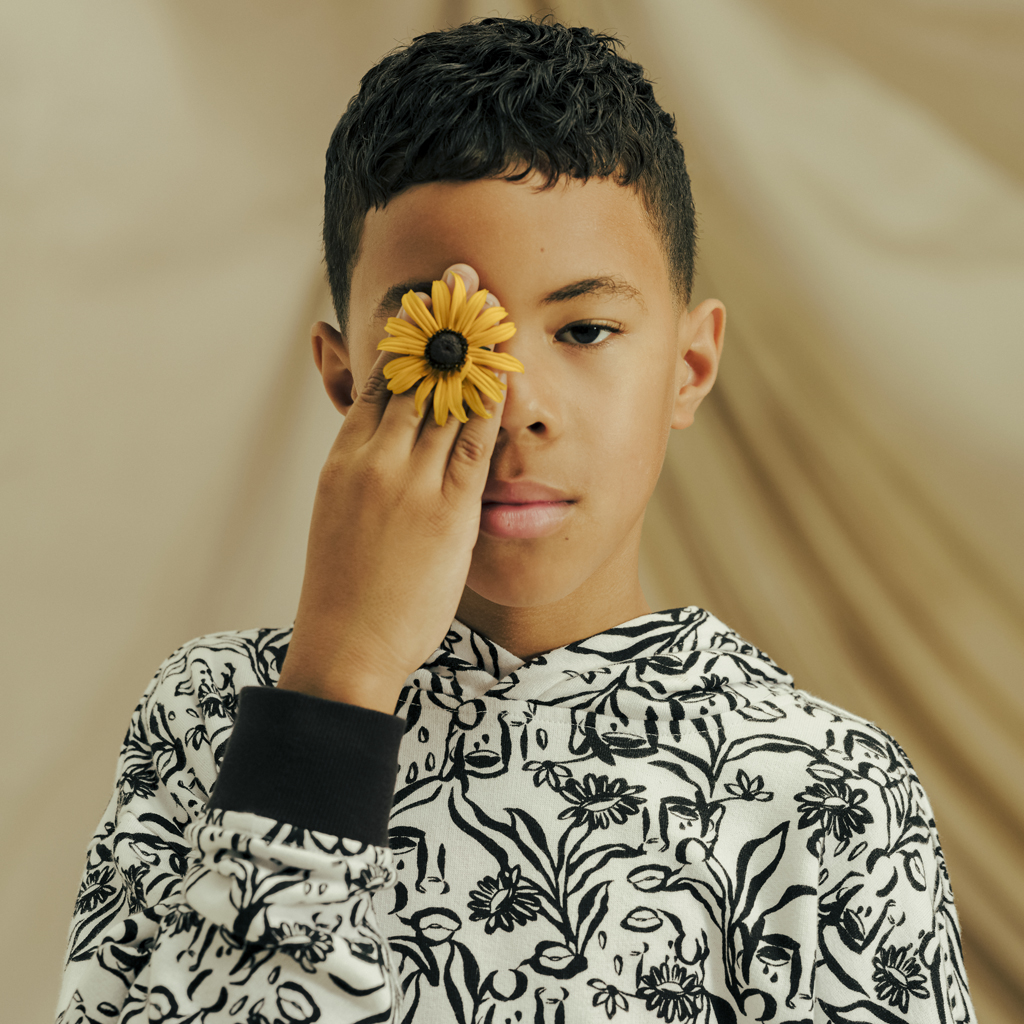
It was an honor to chat with the artist turned designer about her work and plans for the future:
What do you think about art and the inner self; what breathes power into your work?
What makes art so powerful for me is that it makes the world feel less lonely. Most people that make art are doing it from that desperate or vulnerable place and they’re not thinking about it too much. So then when you ultimately share your art with other people and they embrace it, it makes you feel more connected and a little less alone. I turn to my art in my quiet moments before I share my thoughts with anyone. I try not to think too much about what I’m TRYING to express, I just do it. Sometimes I don’t even understand what the story is that I’m painting until it’s out there – and then I have time to sit and think about it. It comes from all pure emotion.
What does painting feel like to you, what is your journey of creation?
What painting feels like varies depending on what I am working on. I tap into a different level with every piece. Sometimes I’m not by myself and I’m painting in front of people or painting while the kids are in here [Cristina’s Seattle studio] with me. It’s about realizing what you’re feeling in that moment and accepting it. It’s never the same feeling. It’s never even a familiar feeling if I’m being honest.
What do you hope your legacy will be as an artist? If you could inspire one emotion in young artists, what would that be?
I don’t think about it as much as a legacy goes, I have to be honest. I don’t think about what I want to leave behind. It’s more about accepting and acknowledging that I didn’t have a blueprint for what I’m doing and wanting that to be different for the youth. Wanting them to look at people who look like them doing things that we [people of color] were told we won’t do – or never shown we could do. That’s probably what’s in my mind more than any legacy. I always think about my kids specifically and they represent the youth all together for me and how they’ll be able to say “I saw her do that, I saw him do that…”
Creating a different experience for them is the goal. When I was young and wanted to be an artist, I didn’t have anyone that looked like me doing that at the time.
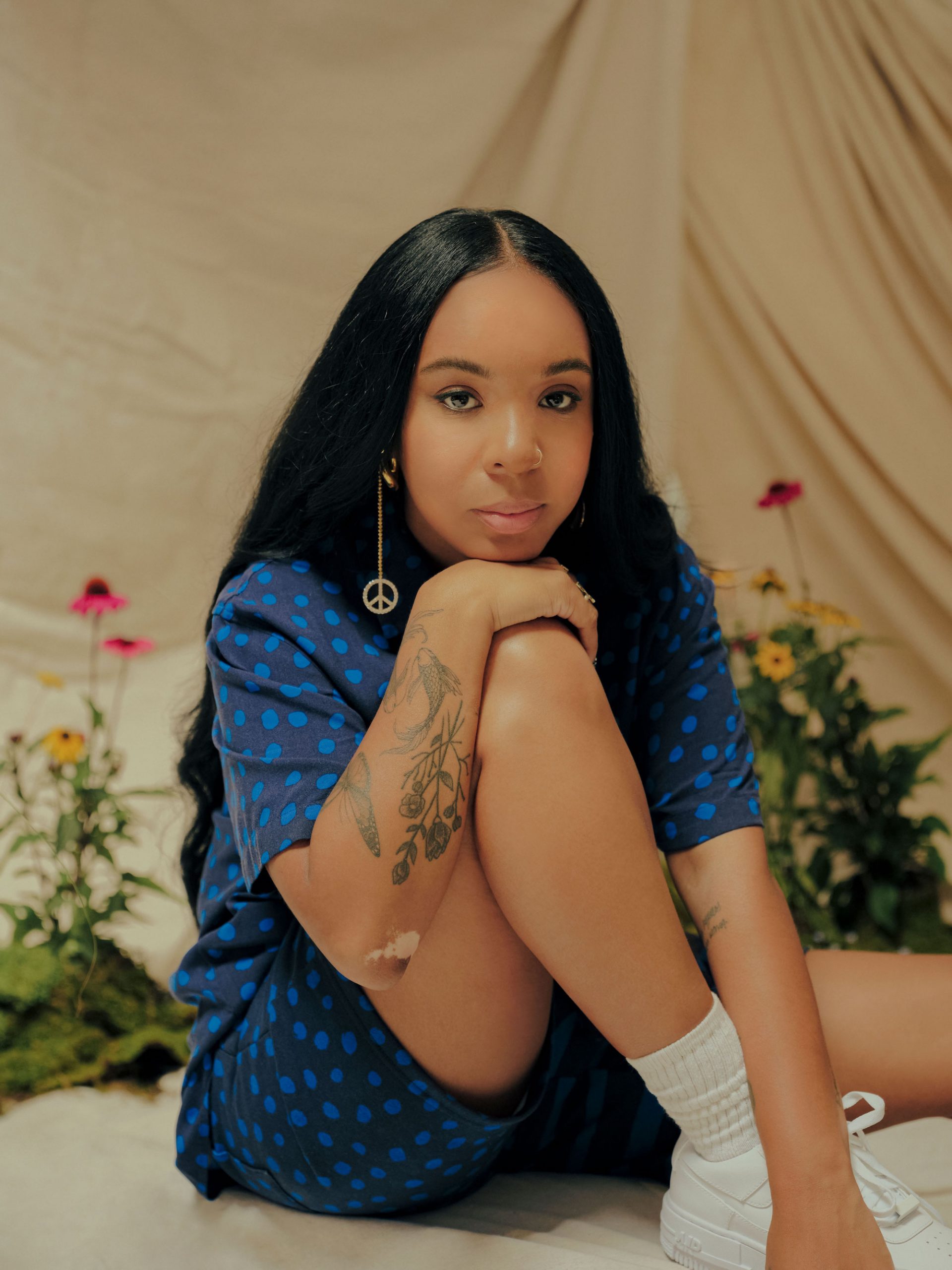
If you could inspire one emotion in young artists, what would that be?
The emotion I want to inspire in young artists is less of a singular emotion and more of a phrase: self-aspiration. It’s not about me at all… I want to motivate you to do what’s inside of you.
What vision/calling persuaded you to make the bold decision to leave fashion school and become a painter?
I made the decision to leave fashion when the quiet voice inside of me that knew what I was really supposed to be doing got louder and louder and louder. I was in college when I decided to go to fashion school. Then I had to take risks twice. I dropped out of college to go to fashion school and then dropped out of fashion school to be an artist. As I was getting closer and closer to my true passion [painting], I couldn’t ignore that feeling anymore. My real calling got louder than my distractions.
What are your wildest dreams for your future as an artist across any medium?
Having your work displayed in a museum is the goal for a lot of artists and one of my personal goals. Museums had an incredible impact on me growing up but didn’t necessarily have a lot of art I could relate to.
One of the wildest yet attainable dreams is creating a permanent Museum Three [Museum Three is a traveling gallery exhibition Cristina and her partner, artist Al-Baseer Holly have created]. Artists who look like me are not always easily accepted into that art world, so creating a museum and forcing that space is the goal. When I think about it, sometimes it feels far away, but a lot of times those are the scarier things you have to make happen. I want to create a space that I can share with people who come after me. And the space will house art they can relate to because it tells their stories.




